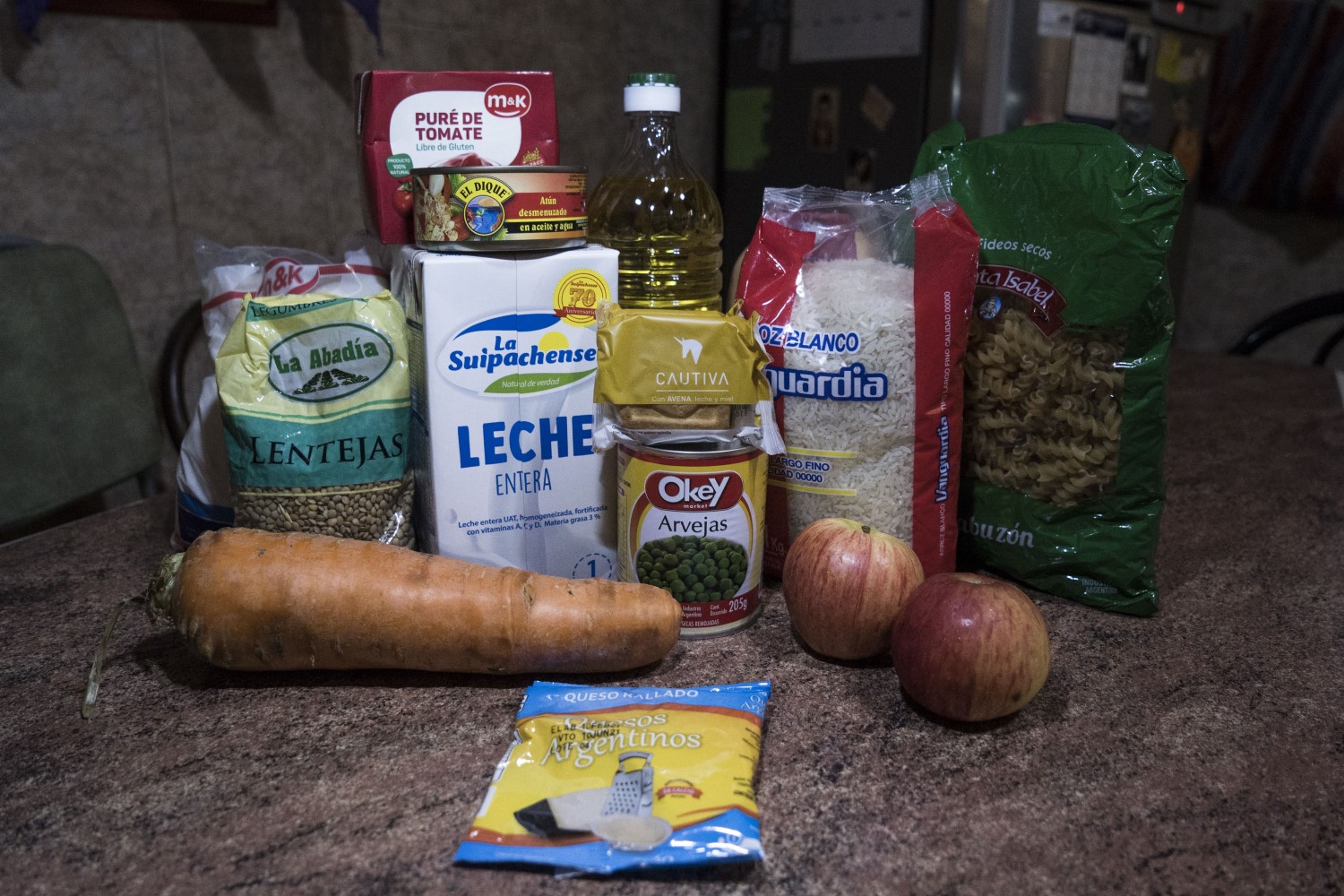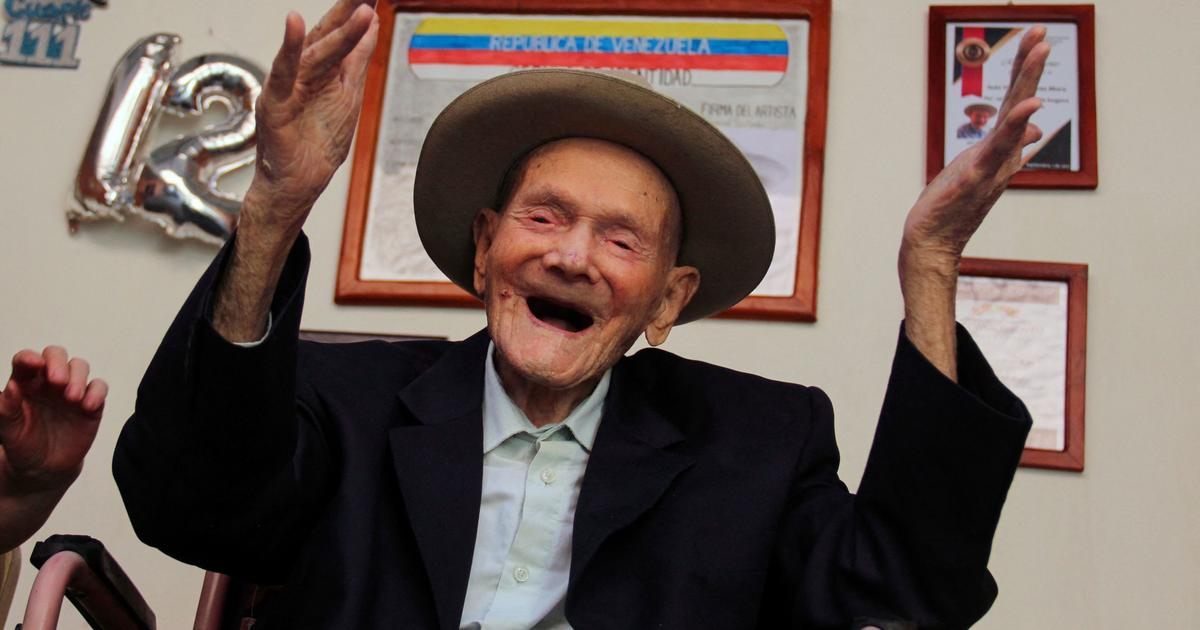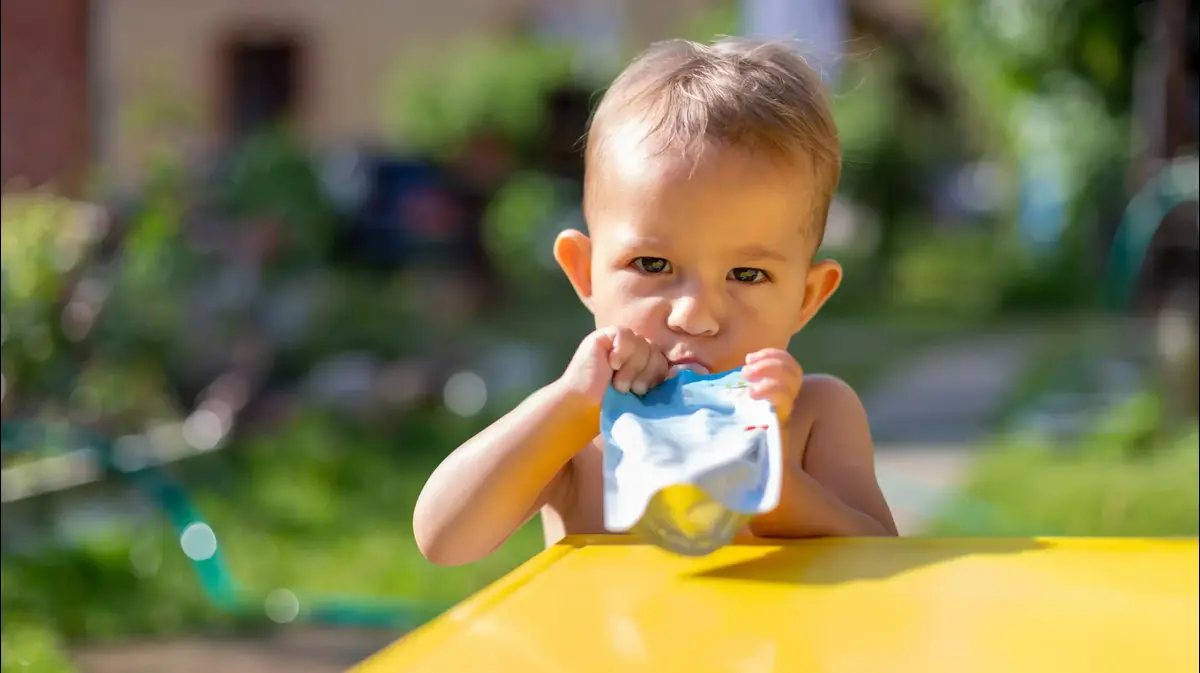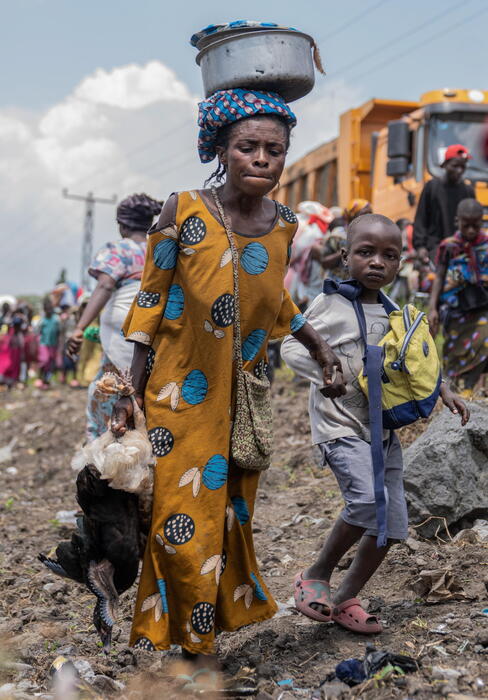Going to school is not just about receiving academic training.
For millions of children from low-income families, school is, above all, nutritional insurance.
It is the place where they can access what in many cases is their only full meal of the day.
The Covid-19 crisis has led to the closure of schools in 192 countries around the world;
in Latin America, 114 million students had to stay at home.
Without classes, without teachers and without the essential school menu.
At the peak of the pandemic, 368 million children around the world were left without dining room service, according to the United Nations World Food Program.
In April 2021 alone in Latin America there are more than 80 million.
SPECIAL |
A year without stepping on my school
For millions of children, going to school also means avoiding hunger
Schools and local farmers unite to feed children in Guatemala
Given this situation, different measures have been taken in each country to distribute food to schoolchildren and their families.
In some cases, such as Argentina, bags of food have been provided.
In others, such as Brazil, the government allocated 537 million dollars to the Bolsa Familia initiative and added one million families to the program.
In Costa Rica they have been more concerned about the nutritional value of the products that were sent, while in Ecuador that of the shakes and cookies that are offered is insufficient, since for many children it represents their only meal of the day.
In other places, it has been neighborhood support networks that have taken charge of the problem.
In this graphic report we travel the continent to see how obstacles are being overcome in the race to eat every day.
Argentina: Bags of food to replace the school cafeteria
Text: Mar Centenera |
Photos: Gabriel Pecot
Ismael, 10, lives with his father, mother and nephew Joaquín, who is two.
It is Monday afternoon and on the kitchen table of this house in Buenos Aires is the bag of food that the public schools of the Argentine capital distribute every 15 days.
Three liters of milk, two large carrots, onions, oranges, pasta, sugar, rice, oil, a pack of lentils, a can of tuna and a can of peas are among the food delivered to replace the dining room service, which remains suspended for fear of contagion despite the return of face-to-face classes.
"What Isma misses the most are the milanesas," says Guadalupe, her mother, about empanada meat, one of the favorite foods of many Argentine children.
"What they give in the pockets must be supplemented, it is not enough," he stresses.
Ismael is at school and Joaquín is in kindergarten, but tonight's menu has already been decided: “noodles with tuco [macaroni with tomato] and chicken”.
Tomorrow they could prepare rice with tuna, proposes Gabriel, Isma's father, "who is the one who cooks at home," according to Guadalupe.
In the bag there is also cooked mate, the infusion that they usually mix with milk in schools for breakfast, and cookies, "which disappears first."
Ecuador: Flavored milk and a cookie for breakfast
Text: Belén Hernández |
Photos: Jaime Casal
Betty Castilla prepares water to make coffee in her kitchen.
He confesses, with great regret, that his pantry and refrigerator are empty.
There is barely a glimpse of a bunch of garlic and a few sachets with oatmeal.
Every Thursday he goes to pick up the homework at school for one of his sons, Elías, 11 years old;
And every two or two and a half months, she receives the bag with the milk and cookies from her other three children, ages 16, 12 and seven, who are also in school in the same classroom.
Milks in small 200-milliliter bricks flavored with chocolate and fruit nectar, all cereal-based, and a pineapple or apple cookie, which was sometimes substituted for an energy bar.
That is the nutritional contribution that public school students in Ecuador received every morning when they attended class before the pandemic.
This same package, but in bags with the content for one month, is what the Government distributes to families in each school since its closure, without a fixed periodicity.
Although the nutritional value of this drink and cookie is insufficient, for many children living in poverty and vulnerability it was probably their only meal a day.
For Castilla, a street vendor of sweets, this nutritional contribution of milk and cookies was very useful to continue feeding her children, now that the little that she can cook, at most, is a noodle soup on a daily basis.
"Since the pandemic began, we barely get five or six dollars each day to be able to put a plate for the boys," he laments.
Since the beginning of the pandemic they had not received any type of state aid and last November the World Food Program offered them a nutritional voucher worth 240 dollars (about 215 euros) exchangeable for food in a supermarket chain.
“With him we were able to buy rice, sugar, cheese, cereals, chicken, meat and yogurt for everyone.
In addition, we were able to make a special meal for everyone at Christmas ”, Castilla acknowledges.
16,000 families have benefited from this coupon in the areas most affected by covid-19.
Guatemala: From the neighbors' farm to the children's plate
Text: Noor Mahtani |
Photos: Jaime Villanueva
The pandemic has not managed to erase Cristina Jalal Caal's laugh.
Although it has not been easy at all.
This robust 45-year-old woman is a widow with seven children.
Her only source of income to support them has been the sale of her fruit and vegetable stand at the foot of the road in front of the school of two of her girls, the Manuela P. de Contreras Official School, in the Guatemalan village of Chimolón.
Onions, peeled mangoes and the odd cocada, which tirelessly frightens a couple of flies.
"With that we have managed," he explains in Poqomchi, one of the twenty Mayan languages in the country.
"And thank God, every eight or ten days we eat chicken."
In his brief pantry there are still some ingredients of the food received by his two registered daughters.
His blessing, as he emphasizes.
Her girls going to school has been an unexpected relief to the household finances.
The food they received every 25 days as a substitute for school lunch has been essential.
In Guatemala, the country with the highest rate of chronic and child malnutrition in Latin America, there has been a regulation since 2017 that these canteens have to guarantee a menu with a value of four quetzals per child (about 50 euro cents) and that at the less half of the production is local and not processed food.
"That these foods continued to arrive during the pandemic was vital so that school dropout rates did not skyrocket," explains Déborah Suc, territorial technician of the FAO school feeding program for Guatemala.
Jalal agrees: "We have all eaten those bags."
It's Sunday and he had to go to school to look for them.
This date is not forgotten.
In each of the bags: two bags of corn flour, three pounds of black beans, 15 eggs, one kilo of sugar, one pound of green beans, one liter of sunflower oil and a couple of kilos of vegetables.
"What they didn't put in was jalapeños," he says with a laugh.
Today he will cook tortillas again with one of those tomatoes that one of his neighboring producers grew.
From its rudimentary kitchen you can hear the little girls running around barefoot near the Polochic River.
Jalal can't help but smile: "Maybe I also make a hard-boiled egg."
Brazil: No fruit or vegetables at home
Text: Felipe Betim |
Photos: Toni Pires
Gisele Fernanda Amancio, 23, is a single mother who has felt the impact of the closure of schools on the feeding of her children.
Samuel, seven, and Daniel, five, attended school between seven in the morning and five in the afternoon before the pandemic.
They ate five times a day.
“At school there were a variety of fruits and vegetables that I cannot offer my children at home,” explains Amancio.
“Here they eat the same thing every day: rice and beans with eggs or a cold meat.
They miss something different ”.
The family lives in a humble house in the Jardim Lapena neighborhood, on the outskirts of São Paulo.
Amancio does not have a formal job and needs to do small jobs as a saleswoman, as a cleaning assistant and delivering brochures to feed her children.
His only stable income is a minimum wage (1,100 reais, or 180 euros) of pension that the Brazilian state gives to his son Samuel, who was born with paralysis.
In addition, from the beginning of the confinements, the São Paulo City Council granted a feeding card with 63 reais (about nine euros) per month to compensate for the closure of schools.
"I have money to buy milk, two cartons of eggs, a kilo of chicken, a kilo of sausage ... What I bought before the pandemic lasted a month.
Now no more than two weeks.
How to get food for another two weeks? ”He asks.
While she talks to EL PAÍS, her children eat a plate of food provided by the neighborhood neighborhood association.
"We have a lot of help here."
Venezuela: Where one eats, 14,000 eat
Text: Florantonia Singer |
Photos: Daniel Hernández
Two kilos of carrots, 12 kilos of squash (a kind of pumpkin) and another two kilos of meat are processed into the cream, to which a portion of cheese is added.
This is the preparation that one Thursday in March, in the afternoon, the two young children and the granddaughter of Laura Azuaje, a neighbor of a Caracas neighborhood, eat for lunch.
The day before the menu was rice, meat and roasted banana.
They are part of the 70 children who attend one of the dining rooms of Alimenta la Solidaridad, an NGO that emerged in the midst of the humanitarian emergency in Venezuela to contain the advance of malnutrition.
La Lucha, the neighborhood where Azuaje, a 39-year-old unemployed woman lives, is one of more than 240 in which the organization has been deployed in 14 states of the country, in whose centers 14,400 children are cared for.
Azuaje's husband receives a minimum monthly income of 1,200,000 bolivars (less than one euro) as an assistant driver in a company that distributes food.
With the money they give him when he has to travel, he raises funds to feed his family.
The rest of the diet is completed by the CLAP (local supply and production committee) bag delivered by the Government of Nicolás Maduro, in which there is only flour, rice, sugar and pasta.
This family's neighborhood dining room couldn't stop during the pandemic.
Before the confinement was decreed, the children ate at the home of Mercedes Gómez, the person in charge of cooking for the beneficiaries.
When everyone had to stay home, he devised a home delivery system: a collaborator went on foot through the neighborhood delivering the containers to each beneficiary.
The woman is a community leader and is proud to have brought the first children she received out of malnutrition.
"If one day I don't light my kitchen, they don't eat anything," he says.
In addition to food, the NGO carries out nutritional monitoring and educational and recreational reinforcement activities.
Chile: Getting used to eating everything
Text: Rocío Montes |
Photos: Cristian Soto
Renata is seven years old and lives in the foothills of Santiago de Chile (the municipality of Peñalolén) with her brother Mauro (17) and her mother, Francisca Garcés (34), who has sporadic jobs doing cleaning.
She is the head of the household.
Since the schools in Chile closed a year ago, the girl does not eat breakfast or lunch at school, but instead receives a box of food every month.
The same one that his brother obtains, who studies high school.
In this 2021 course that started in March, the National Board of School Aid and Scholarships (Junaeb) delivered food baskets for 1,796,433.
Chilean students who need it, equivalent to what they would have eaten for breakfast and lunch for 15 business days in their respective establishments.
It includes non-perishable products, canned fish, frozen meats, and fresh vegetables and fruits, according to a nutritional table.
The mother says that the boxes represent an important help for her budget and that the first thing that disappears are the cereal bars.
"My children are not tricky [complicated], because I have always used them to eat everything, like legumes," says Francisca.
"In any case, her favorite dish is spaghetti with salmon," says the woman, who has even stopped paying basic bills in quarantine to ensure that her children do not stop eating properly.
Colombia: It's time to eat vegetables, Juan
Text: Santiago Torrado |
Photos: Camilo Rozo
Juan Manuel, four years old,
he's willing to tell anyone who will listen that he doesn't like vegetables.
He assures that he is "allergic" in a playful tone.
"But it's time to eat them," encourages her mother, Biviana Linares, as she serves her a plate with a mixture of meat with vegetables, rice and avocado, chicken and rice with noodles at her home, in a rural and mountainous area on the outskirts of Bogota
Juan Manuel is in Transition (the step from preschool to school) and has a 17-year-old sister in the last year, Valentina, who dreams of studying Medicine at the university.
Both belong to the Monteverde rural school and have not received face-to-face classes for a year.
In Bogotá, where progress has been made since January in a gradual reopening of schools, the families of some 753,000 students in the public education system depend on the food they receive from the School Food Program (PAE).
Due to the pandemic, the PAE was adapted to virtual education with two modalities: a food voucher and a ration to prepare at home.
The voucher, for students in the urban area, consists of 50,000 pesos (about 12 euros) per month to be redeemed for food, while the ration corresponds to the delivery of a basic basket of products for dispersed rural areas.
Every 15 days, Biviana, who works as a caretaker, collects 30 eggs from the school, a kilo of meat, fruit pulp, a package of beans, carrots, sweet cookies, two pounds of rice, one pound of lentils, two bags of milk and a bottle of oil for each of her children.
"The market is an incredible help for us," he says.
Costa Rica: Learning with Rice, Beans, and Pineapple
Text and photos: Álvaro Murillo
His name is Matthew and he loves pizza, like so many children, but his mother barely has to pay the rent and the cafeteria menu only offers healthy meals.
That Monday they served rice and beans (which cannot be absent in Costa Rica) with chicken in Caribbean sauce and cabbage salad, plus a slice of fresh pineapple and a glass of water, but this fifth grade student still enjoys his lunch.
Better, because at home the refrigerator was almost empty.
If you don't eat here, you will probably be hungry in the afternoon because your mother, Silvia Elena Gómez, is a lottery seller and there are days when she comes home empty-handed.
She is reassured to know that her 11-year-old boy goes to the cafeteria every day with all his classmates from the Ascensión Esquivel school, in the city of Alajuela.
Potatoes with chicken, tender beans with pork, chickpeas, cucumber, carrot lettuce or yogurt… The options for the week seem enough so that Mathew can attend his classes without nutritional problems.
That same day the school distributed bags with food, part of the 850,000 packages planned to be sent home this month, after 8.5 million of them were delivered in 2020 at an approximate cost of 140 million euros;
but not a peso had to be paid by the beneficiaries.
In addition, these same bags were the communication channel of the schools with many parents.
Homework, errands, and even letters of encouragement traveled amidst papayas and packets of rice to prevent students from disconnecting completely.
The menus or packages are assembled with the criteria of nutritionists, and include fresh vegetables and fruits, eggs, meat, milk and basic grains of the Costa Rican diet.
Any sugary drink is left out and they serve water instead.
The warnings for obesity problems penetrated a few years ago in the educational authorities and that is why Matthew enjoys a slice of yellow pineapple for dessert.
His mother says that here he consumes without major problems what he sometimes refuses to eat at home.
The social pressure to eat in a group helps, the cooks joke.
Peru: To school for the bag of food
Text: Jacqueline Fowks |
Photos: Ministry of Development and Inclusion of Peru
On March 15, many female heads of families approached the 1135 public school in Santa Clara de Lima, Peru, to collect the food products provided by the Qali Warma School Feeding Program, promoted by the Ministry of Development and Social Inclusion.
Before the pandemic, students received a school breakfast prepared at school, but since April the state has delivered non-perishable items.
In Lima, products such as vegetable oil, fortified rice, brown sugar, cans of canned meat, chicken or hen, canned fish, noodles, wheat flour, oat flakes with cañihua (grain grown in the Andes of characteristics similar to quinoa) and evaporated milk.
At the Santa Clara school, parents are given two 250 ml bottles of oil, a small bag of flour, 250 grams of sugar, three cans of evaporated milk, three cans of canned chicken, four cans of tuna, a bag of oatmeal and a bag of rice.
Parents, however, often complain on the Qali Warma Facebook page that the quantity is insufficient and the products of unknown brands.
Foods vary slightly in the Andean regions and the Amazon.
According to the Ministry of Development and Social Inclusion of Peru, more than four million primary school students living in poverty or vulnerability receive school meals in 64,000 schools.
Bolivia: A quintal of rice that saves
Texts: Andrés Rodríguez |
Photos: A. Rodríguez and Pierre Bamin
When Luis Fernando Pardo went to his school, in the Bolivian municipality of Cochabamba, every day he could eat a sponge cake with raisins, cookies with almonds, a corn thread, a mandarin or a banana.
These solid foods were accompanied by three varieties of milk: chocolate, oatmeal and quinoa.
It was part of their school breakfast, a food package that was given to each student in the public education system.
After the suspension of classes on March 12 of last year, Luis Fernando stopped receiving them.
The rigid quarantine, which lasted for three months in Bolivia since March 2020, wreaked havoc on the income of many families in a country with one of the largest informal economies in the world.
Thus, the provision of the school breakfast, or its equivalent in kind or money, became a source of conflict in different municipalities: marches, protests, confrontations with the forces of order, blocking of streets ... And even the kidnapping of municipal authorities were the actions that parents from different regions took to receive help of any kind.
The school year in Bolivia was closed on August 2.
Since then, Sabina Pardo, Luis Fernando's mother, had to attend various marches and protests in order to receive a food supply with resources from the school breakfast.
After several months of dialogue, of putting pressure on the municipal authorities and overcoming bureaucratic processes, the second week of March he was finally able to collect the sum of 240 Bolivians, equivalent to 29 euros, which was given to parents for each child enrolled in the school.
"I told them at home that since it was money for school breakfast, it had to be for lunch," he says.
With this sum, the Pardo family was able to buy a quintal of rice (46 kilos), an amount that can feed them for at least six months.
“It is always an extra help to buy what is missing.
It is not enough for everything, but what can be done is done.
Always save ”, he concludes.
Note to readers: EL PAÍS offers openly all the content of the Future Planet section for its daily and global contribution to the 2030 Agenda. If you want to support our journalism,
subscribe here.
FUTURE PLANET can follow on
,
and
, and subscribe
here
to our 'newsletter'
.









